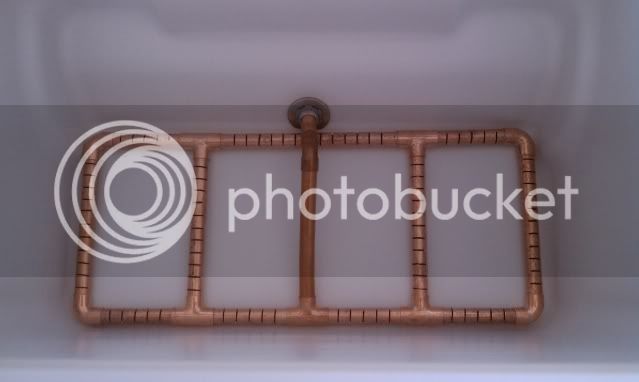hops2it
Well-Known Member
I'm gearing up for my first AG effort and I want to get opinions on where I stand and what equipment additions would make life easier at this point. I will say I'm not interested in pumps at this time. Here's my current list of equipment:
-10.5 gallon s/s pot with 1/2" s/s ball valve and Blichman thermometer
-5 gallon aluminum pot
-1/2" OD copper immersion chiller recently completed
-Bayou single stand burner (2 ft height?)
-Rectangular cooler mash tun not yet purchased/completed
-4 fermenting buckets
-1 bottling bucket w/ spigot
Was figuring on around a 50qt rectangular cooler with copper manifold not yet purchased/fabricated, open to changes if recommended otherwise. I bottle all my beer and typically only doing 5 to 5.5 gallon batches. Here's the main question with all this in mind...
What ELSE do you recommend? Should I be using the kettle for a HLT or should I get something like an upright cooler for heat retention purposes? I feel like I'm still missing something here. I'm trying to think about how to make things the easiest when it comes to adding mash water, then sparge water, then mashout water...just seems like a lot of different water at varying temps to be juggling with my current equipment. There's gotta be a way to streamline this so it's less hectic. Also may be worth mentioning that I was planning to batch sparge.
Thanks for any opinions.
-10.5 gallon s/s pot with 1/2" s/s ball valve and Blichman thermometer
-5 gallon aluminum pot
-1/2" OD copper immersion chiller recently completed
-Bayou single stand burner (2 ft height?)
-Rectangular cooler mash tun not yet purchased/completed
-4 fermenting buckets
-1 bottling bucket w/ spigot
Was figuring on around a 50qt rectangular cooler with copper manifold not yet purchased/fabricated, open to changes if recommended otherwise. I bottle all my beer and typically only doing 5 to 5.5 gallon batches. Here's the main question with all this in mind...
What ELSE do you recommend? Should I be using the kettle for a HLT or should I get something like an upright cooler for heat retention purposes? I feel like I'm still missing something here. I'm trying to think about how to make things the easiest when it comes to adding mash water, then sparge water, then mashout water...just seems like a lot of different water at varying temps to be juggling with my current equipment. There's gotta be a way to streamline this so it's less hectic. Also may be worth mentioning that I was planning to batch sparge.
Thanks for any opinions.























![Craft A Brew - Safale S-04 Dry Yeast - Fermentis - English Ale Dry Yeast - For English and American Ales and Hard Apple Ciders - Ingredients for Home Brewing - Beer Making Supplies - [1 Pack]](https://m.media-amazon.com/images/I/41fVGNh6JfL._SL500_.jpg)



































